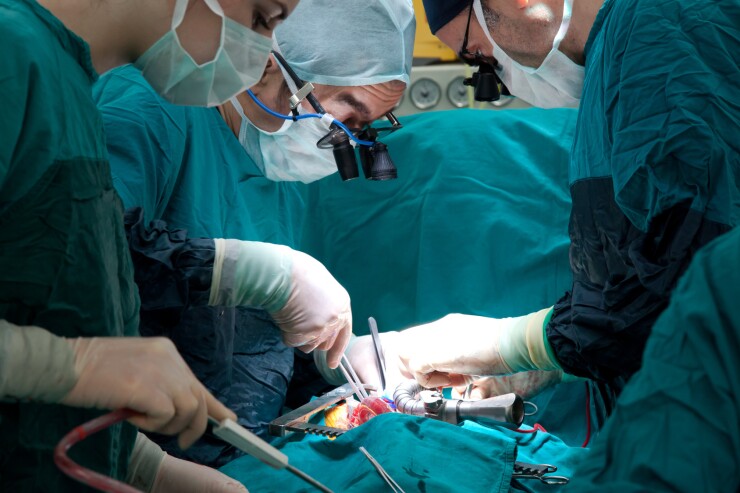It’s become a broken record: Every year many of the nation’s hospitals fail or get poor grades for their safety performance. They claim the studies are faulty and/or make excuses and/or promise to do better. And the next year it’s pretty much the same story.
The result is that medical mistakes remain the third leading cause of death in the U.S., killing at least 250,000 patients yearly (and possibly more, depending on how the fatalities are determined).
Who pays for these mistakes? Well, employees and their dependents and everyone else with their lives or poor health, but employers are footing a significant portion of these costs, which account for a large portion of America’s $3.5 trillion healthcare bill.
Now comes news that hospitals persuaded Congress to instruct the Centers for Medicare and Medicaid Services (CMS) to re-examine its finding on patient safety before releasing its report on safety and quality. The hospitals are questioning the study’s methodologies and conclusions.
Even the Clinical Center at the National Institutes of Health, considered a model for the application of science and technology to medicine, was criticized this month for sacrificing safety for research, resulting in a
The Leapfrog Group, a business-backed patient advocacy group that surveys hospitals on a yearly basis – one of two dozen national organizations devoted exclusively or partially to patient safety – did release its findings from its 2016 survey last month in accordance with their annual schedule. Once again, it found the safety landscape lacking. Its report concluded that “33,439 lives could be saved each year if all hospitals had the same performance as those receiving an A.”

Given these results, it’s not surprising that two earlier Leapfrog reports revealed serious safety problems in American hospitals. In the first, Leapfrog investigated how effective electronic prescribing systems are at preventing harmful medication errors, like an adult dosage prescribed to a child or a dangerous interaction between two drugs. It found that even when hospitals have these computerized physician order entry (CPOE) systems in place, 39% of potentially harmful drug orders aren't flagged by the system to alert staff of potential errors. More shocking, 13% of potentially fatal orders fail to trigger an alert.
Still another area of grave concern is being addressed by Leapfrog’s Health Care-Associated Infections report, focusing on urinary tract and blood stream infections in the ICU. (This is the first of five scheduled examinations of patient safety and quality). The analysis revealed that only 25% of hospitals met Leapfrog’s standards for catheter-association urinary tract infection (CAUTI). The Leapfrog Group's standard for CAUTI is that the rate of infections is close to zero. In addition, the central line-associated blood stream infection (CLABSI) rate was too high, with only 25% of hospitals meeting Leapfrog’s standardized infection ratio (SIR) of zero for CLABSI. Sixty-seven percent of hospitals had a SIR between zero and 1.0, while a small, but significant minority of hospitals (8%) had a SIR of above 1.
Consortium proposed
Any activity involving humans has the potential for errors that can be harmful or even fatal, but the prevalence and continuation of the problems cited above and others documented in multiple studies are unacceptable for an industry entrusted with the public’s safety. What’s even more discouraging is that after two decades and the formation of multiple groups dedicated to reducing medical errors, the problem has gotten worse, according to some studies.
One organization that is optimistic about improvement in patient safety is the Patient Safety Movement Foundation, a non-profit that works closely with healthcare organizations to eliminate preventable deaths. Begun four years ago as the Patient Safety, Science & Technology Summit, the PSMF says its recommendations have helped save over 24,000 lives in 2015 and they are looking to double the number for 2016.
“If we can get everyone to join, we will be able to reach our goal of zero preventable deaths by the year 2020,’ says PSMF president, Joe Kiani, CEO of Masimo, the organization’s founding member. As of January 23, 2016, over 1,600 hospitals had joined the movement by committing to zero preventable deaths by implementing processes to avoid medical errors turning fatal, and nearly 50 medical technology companies had committed by publicly pledging to share the data their products were purchased for with anyone who wants to use the data to improve patient safety.
However, Kiani believes that for real progress to be made in patient safety, the many patient safety organizations need to coalesce into a consortium of sorts, so they can coordinate their activities, share their success stories, and use their collective clout to pass legislation that will accelerate the safety process. To this end, the PSMF has invited such groups to meet on June 9 to discuss the merits of a mega-organization, the day before its mid-year planning meeting to be held in Falls Church, Va., a suburb of Washington, D.C.
An important member of this proposed consortium could be employers, who, with some notable exceptions, seem relatively unconcerned about patient safety, as documented in a recent report, “Silently Harmed,” and other studies conducted by the Heartland Health Research Institute.
Given the mounting evidence of hospitals’ inability or unwillingness to combat medical mistakes, it is incumbent upon employers to join other stakeholders to help healthcare facilities improve their patient safety performance. Kiani says among the steps employers can take to make patient safety a priority is “asking hospitals to make zero preventable deaths their management goal and putting processes in place to reach that goal. They can also review with their insurance company bill and have them identify charges that resulted from a medical error or charges that they paid despite their employee dying from a medical error.”





